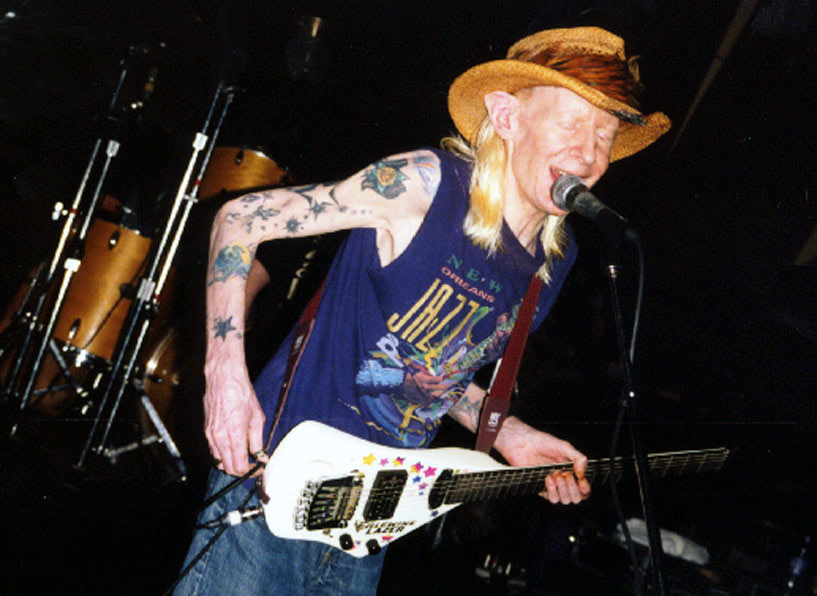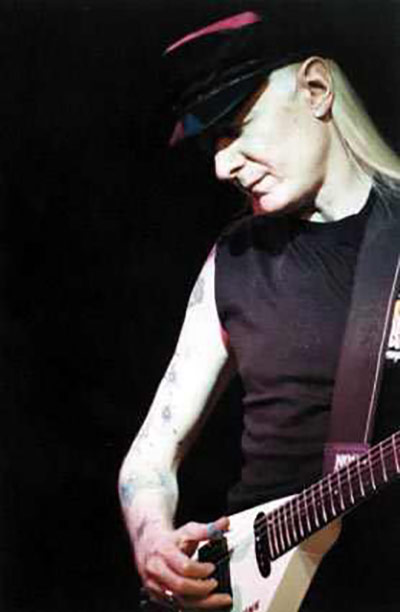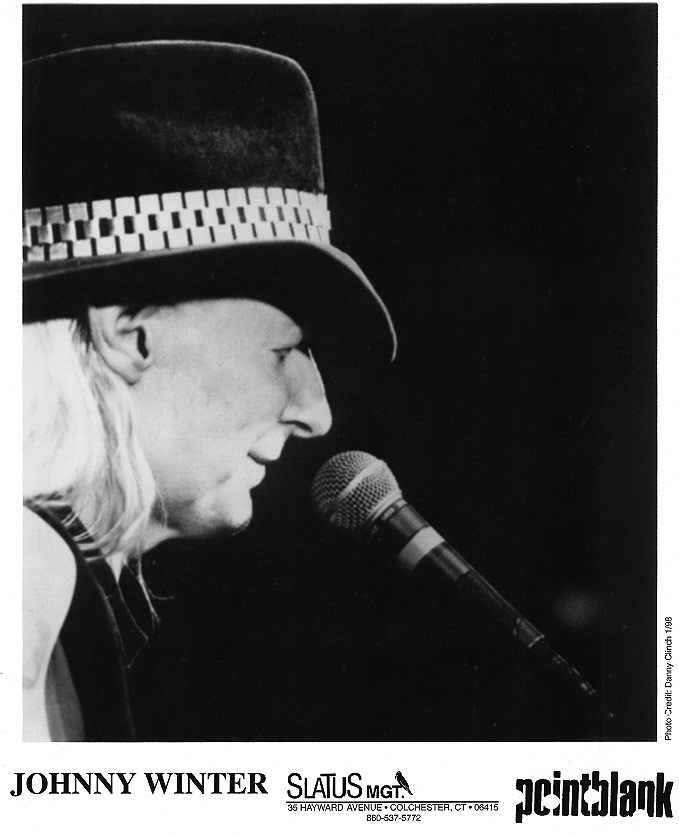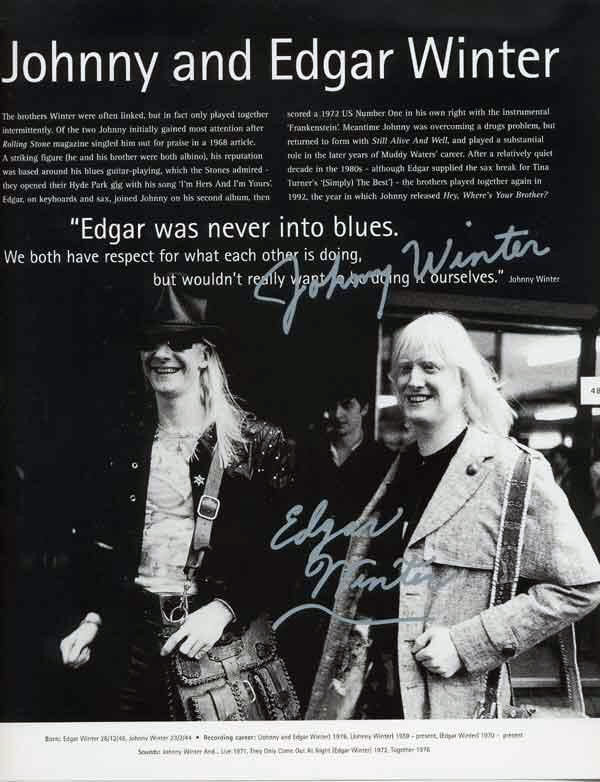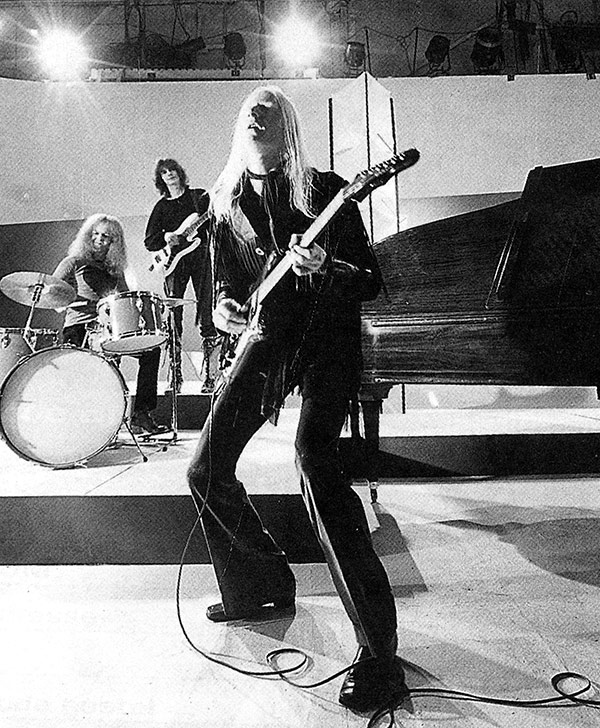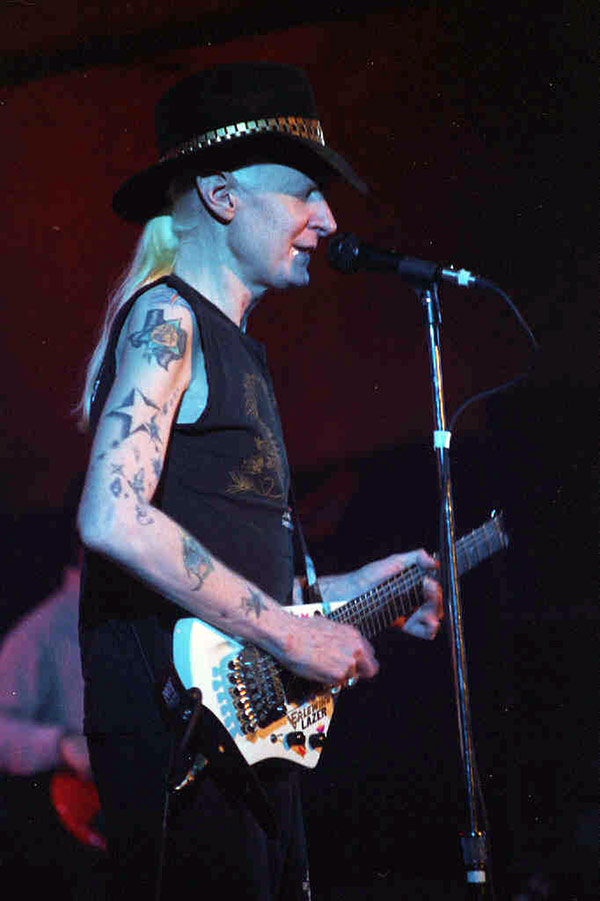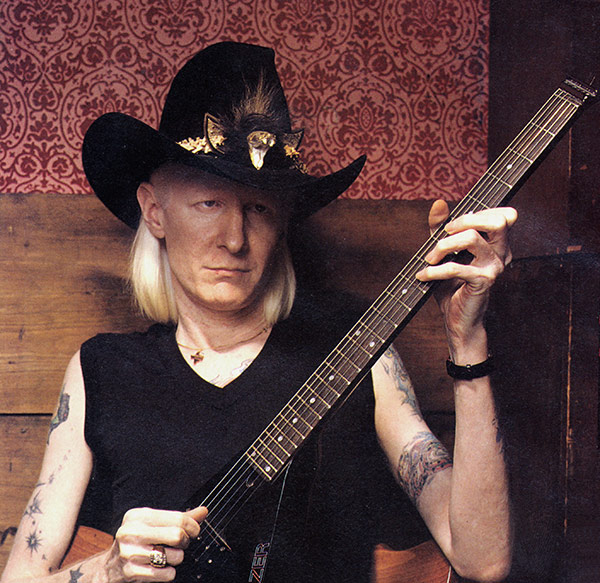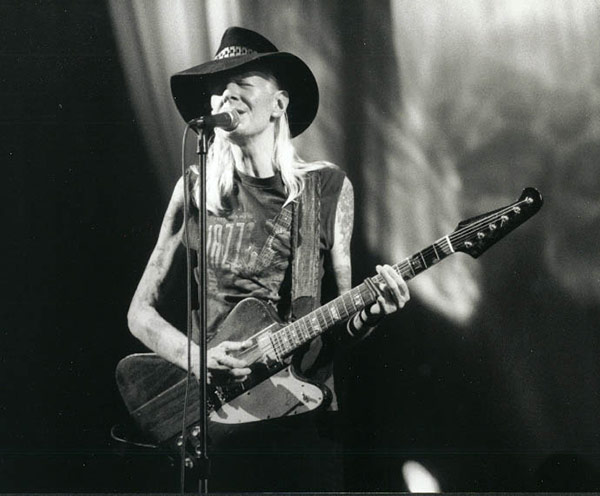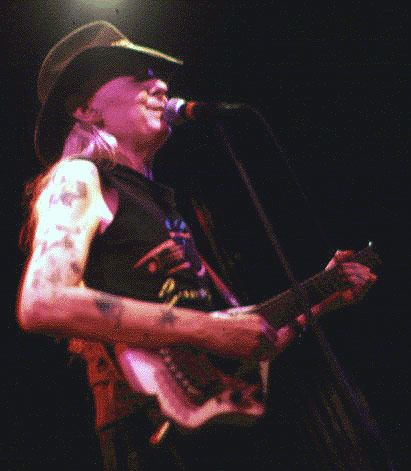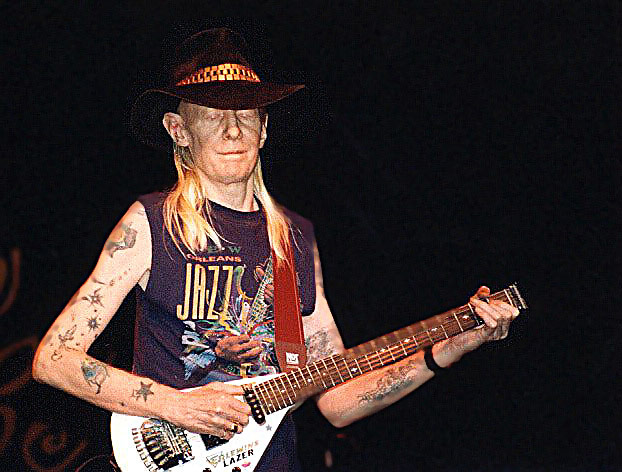IT’S NOT UNUSUAL for big-name acts to have their past recordings exposed to the music-hungry public. Some, like Guns’N’Roses, supervise the operation themselves, though their reissue of a mini-album recorded before they found fame had more to do with a lack of time (or, arguably, inclination) to cut a follow-up. Johnny Winter, by contrast, has been both prolific and creative in a career that kicked off in earnest in the early 1960s and still shows little sign of slowing. The recordings showcased here hark back to those early days and add to the musical legacy of a man set to emulate the blues legends that first inspired him and go on playing to a ripe old age.
Not that this always looked on the cards. Johnny, a white-haired albino who, along with multi-instrumentalist brother Edgar, cuts an instantly recognisable figure, has experimented with forbidden fruit during his spell at the top and was fortunate to survive a heroin habit. Returning with the appropriately titled ‘Still Alive And Well’.
Album, he confirmed his renaissance in the 1980s with a series of killer albums on Alligator, the US’s most vibrant blues label. These are as essential to any collection as his late 1960s-early 1970s output on Blue Sky (through CBS/Sony) which still represents his best-known work.
But let’s backtrack to 22 February 1944, when John Dawson Winter III was born in Leland, Mississippi. The first son of John and Edwina Winter was quick to follow his parents’ musical leanings and was playing the ukulele by age nine: this quickly led to the guitar. Edgar in turn picked up the piano and saxophone, with the result that, as the pair entered their teens in Beaumont, Texas and rock took off worldwide, they teamed up in a number of local groups.
Johnny and the Jammers, the Crystaliers and the Black Plague all proved early stepping stones towards a full-time career in music, a first recording session coming in 1960 courtesy of Dart, a minor Houston label. Subsequent releases surfaced through many outlets, notably the Home Cookin’ label, much of the output produced by local magnate Roy C Ames.
The 1960s was the decade when rock came of age – but Johnny left it late to join the party. After a rave review in Rolling Stone magazine had record companies knocking on his door, the national breakthrough came in 1969 with ‘Johnny Winter’, an album which, with ‘Second Winter’ (1970) and to a lesser extent ‘Johnny Winter And’ (1971), kicked new life into a time-honoured format to prove that, despite rock’s psychedelic phase, native American musical forms were far from outdated.
Even then, though, earlier recordings were surfacing, most notably the ‘Progressive Blues Experiment’, cut live in an Austin nightclub without an audience. Many thought this more potent than the eponymous first album whose success it shadowed, portraying Johnny with fewer of the rough edges smoothed down. And while fans enjoyed recordings that gave them more of an idea of where their hero was coming from, Winter himself had no need to be ashamed.
When did imitation give way to innovation? It was a gradual process, that’s for sure. Winter’s own compositions range from the quirky to the impressive, the verbose to the instrumental, while some of the songs he tackles from outside the blues format are less appropriate. ‘By The Light Of The Silvery Moon’ and ‘Harlem Nocturne’ are certainly a-typical offerings to be given the Winter treatment.
But hear him sing the stuffing out of ‘Please Come Home For Christmas’ and you simply can’t doubt his sincerity. The Charles Brown standard has since been re-interpreted by the Eagles and, recently, Bon Jovi – sadly, he didn’t get to kiss Cindy Crawford – but Winter thought enough of the song to include a new recording on 1992’s ‘Hey, Where’s Your Brother?’.
By the time that was released, Winter’s star had risen again and he had been snapped up by Virgin to sit proudly on the roster of their prestigious PointBlank label alongside fellow legends Albert Collins and John Lee Hooker. The 1990s would see many guitarists rediscover their blues ‘roots’, with decidedly variable results, and in this musical environment Winter’s genuine affection for the genre was more than welcome.
Muddy Waters, whose career Johnny Winter helped revive in the 1970s alongside his own, recognised a kindred spirit when he heard one. ‘He was playing so much of the old stuff… all the old blues players like me’n Jimmy Rogers and a lot more, he was playing all of our stuff. I figured that this was the greatest chance, man, of all my days, to get with someone who’s still got it, that early-1950s sound.’
Maybe Winter was born the wrong colour and at the wrong time to be a founding father of the blues, but he’s certainly helped many discover the music for themselves. This new collection will continue that rewarding process…
Michael Heatley
